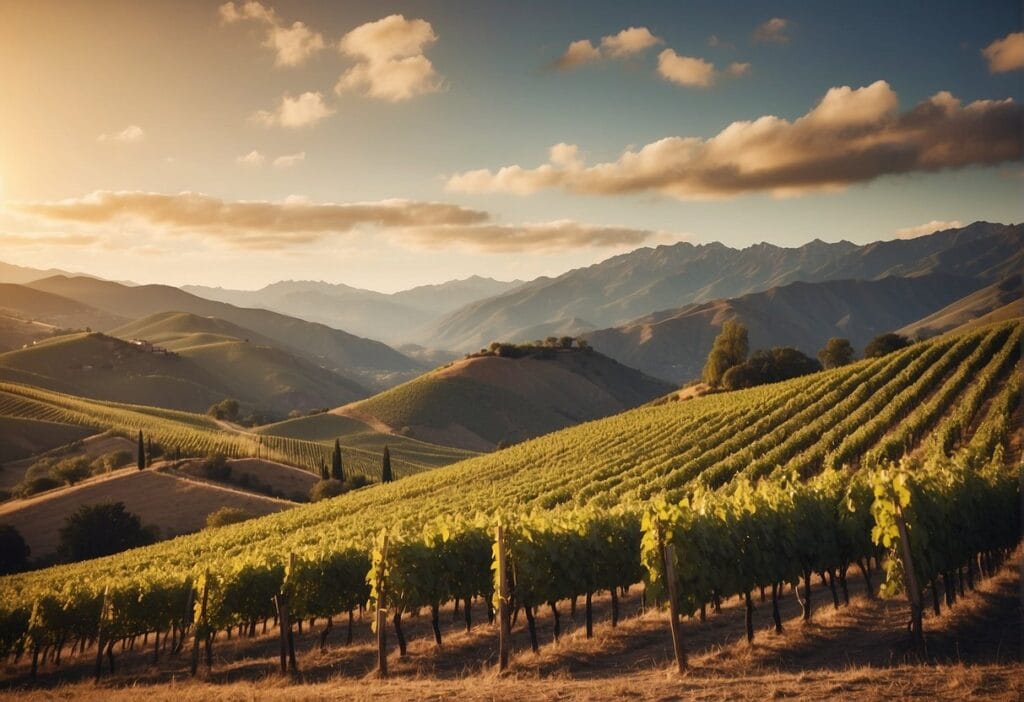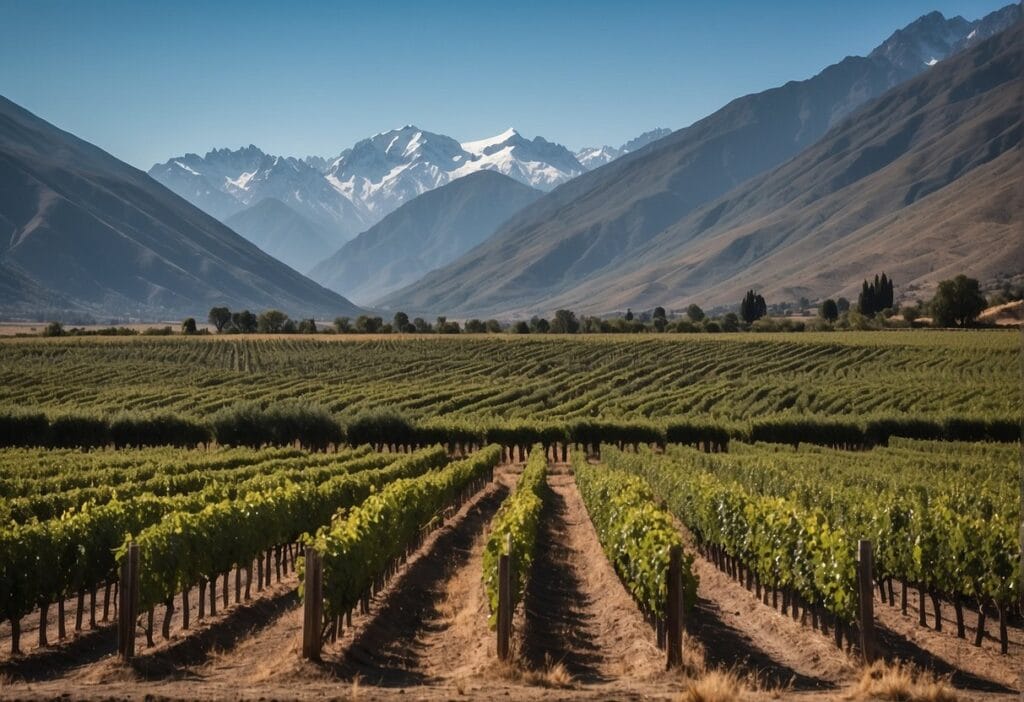Imagine traveling to a region where history and tradition have shaped not only the landscape but also the people and their craft. The Barossa Valley in Australia is one such place. Developed for agriculture by German settlers in the mid-1800s, this region quickly became known for its vineyards and rich cultural heritage. Today, the Barossa Valley stands as a testament to the enduring legacy of those early settlers.
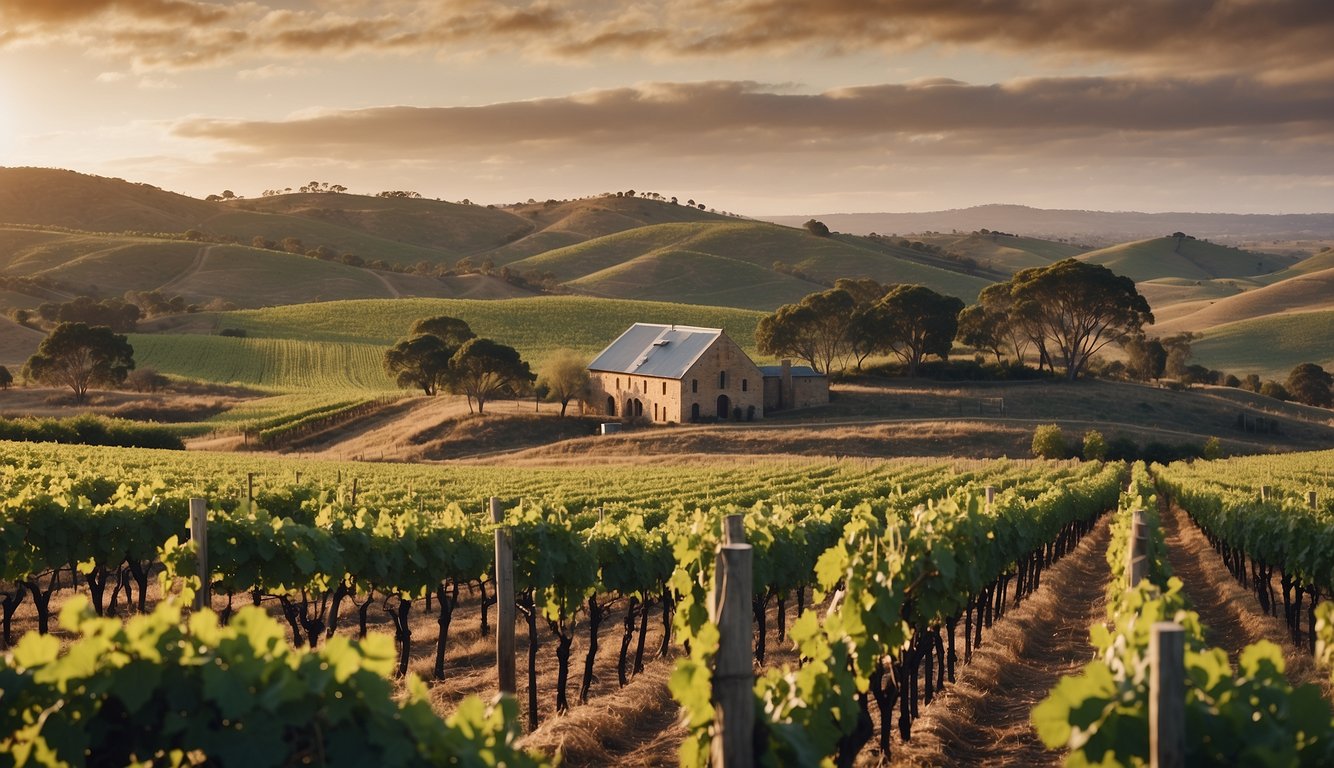
As you walk through the vineyards, you can almost feel the history beneath your feet. The Barossa Valley’s wine history dates back to 1842, making it one of Australia’s most historic wine producing regions. Families here have been tending to the vines across generations, preserving the unique traditions and flavors that make Barossa wines so special. The influence of the Prussian Silesian Lutherans who joined the early British settlers is evident in the architecture and the friendly community spirit.
What makes this region even more fascinating is its journey onto the world stage. From its humble beginnings, the Barossa Valley has achieved global recognition for its wines. Renowned wineries and small family-run vineyards coexist, producing some of the finest wines enjoyed worldwide. Whether you are a wine enthusiast or simply love exploring places rich in culture and history, Barossa offers an unforgettable experience.
Discovering the Barossa: Early History and Settlement
Barossa Valley’s development began with settlers who transformed the region into a renowned wine-producing area. The most influential early settlers were Germans fleeing persecution and British immigrants.
German Influence and George Fife Angas
The Barossa Valley’s history began with George Fife Angas, an influential figure who played a pivotal role. Angas, a British businessman and philanthropist, invited German Lutherans to escape religious persecution and settle in South Australia.
The Germans arrived with strong agricultural skills, focusing on viticulture. They established the first vineyards in Barossa, setting the foundation for its future. Their expertise in winemaking and farming laid the groundwork for what the valley would become.
Today, the impact of those early German settlers is still evident in the valley’s architecture, traditions, and wineries. The German influence is a crucial element of Barossa’s cultural and historical heritage.
Settlement by British and Other European Settlers
The Barossa Valley also attracted settlers from Britain and other parts of Europe. Following the first wave of German immigrants, British settlers came and made their mark. Colonel William Light, the Surveyor General of South Australia, named the region Barossa, which he thought resembled the Spanish Barossa Mountains.
British settlers brought their own agricultural techniques and customs. Additionally, various European immigrants arrived, each contributing unique viticultural practices. Their collective contributions helped shape the region’s agricultural landscape.
As a result, Barossa’s early history is a rich tapestry of diverse cultural influences that shaped its development. Each group of settlers brought their expertise, creating a unique blend that remains a cornerstone of Barossa Valley’s identity.
The Vineyard Landscape: Climate, Soil, and Varietals

The Barossa Valley‘s unique climate and soil contribute to its world-renowned wines. This region produces diverse grape varietals, including Shiraz, Grenache, and Riesling, enhanced by the valley’s old vines.
Climatic Conditions Favoring Viticulture
The climate in the Barossa Valley is ideal for grape growing. Summers are warm, which allows grapes to ripen fully, developing rich flavors. Cool nights help retain acidity in the grapes, balancing the final wine.
Winter rains replenish the soil, providing much-needed moisture for the vines during the growing season. Frost is rare, reducing the risk of damage to young vines. This combination of factors supports the production of high-quality wines.
Soil Types and Their Impact on Grape Growing
Different soil types in the Barossa Valley create unique characteristics in the wines. The valley floor has clay loam soils, which are rich in nutrients and retain water well. This soil is perfect for growing Shiraz and Grenache.
The higher elevations have sandy and rocky soils. These soils drain well and are less fertile, leading to lower yields but higher quality grapes. Varieties like Riesling and Cabernet Sauvignon thrive here, producing wines with distinct mineral notes.
Prominent Grape Varieties and Old Vines
You will find some of the world’s oldest Shiraz vines in the Barossa Valley. These vines, some planted as far back as the 1840s, produce concentrated flavors and complex wines. Grenache and Riesling are also key Varietals, each bringing unique profiles to the table.
Cabernet Sauvignon and Semillon are notable too, adding to the diversity of wines produced. The region’s old vines create wines with depth, character, and a true sense of place, showcasing the valley’s heritage and evolution.
Wine Production: From Small Farms to an Industry
The Barossa Valley’s transformation from small farms to a leading wine industry is marked by innovative winemaking practices, influential wineries, and key players like Penfolds and Yalumba.
Evolution of Winemaking Practices
Early winemaking in the Barossa Valley started with German settlers fleeing Prussian persecution. They brought traditions and skills from Europe, initially focusing on small, family-run farms. Over time, these practices evolved. By the 1980s, the region started producing vibrant, fruit-forward wines that gained global recognition.
Today’s Barossa Valley is known for robust varieties like Shiraz and Grenache. Modern technologies and techniques have been integrated without losing the traditional methods that made the Valley famous. This blend of old and new helps maintain a high standard across Barossa wines.
Wineries That Shaped the Valley
Several wineries have played crucial roles in shaping Barossa Valley. Johann Gramp established one of the first wineries by the banks of Jacob’s Creek in 1847. His work laid the foundation for what would become a famed wine-producing region.
Peter Lehmann and Wolf Blass are among the winemakers who brought international acclaim to Barossa wines. These wineries set a benchmark in quality and innovation, pioneering techniques that others would follow, and helping create a global reputation for Barossa.
Penfolds, Yalumba, and the Role of Winemakers
Penfolds and Yalumba are two iconic names in the Barossa Valley. Penfolds, founded in 1844, is renowned for its rich, complex Shiraz and other fine wines. Yalumba, established in 1849 by Samuel Smith, is known for its innovative techniques and commitment to sustainable practices.
Winemakers like Max Schubert of Penfolds created legendary wines such as Grange, elevating Barossa’s status in the wine world. The efforts of these pioneers have made Barossa a symbol of exceptional winemaking, blending heritage with modern innovation.
Preservation and Progression
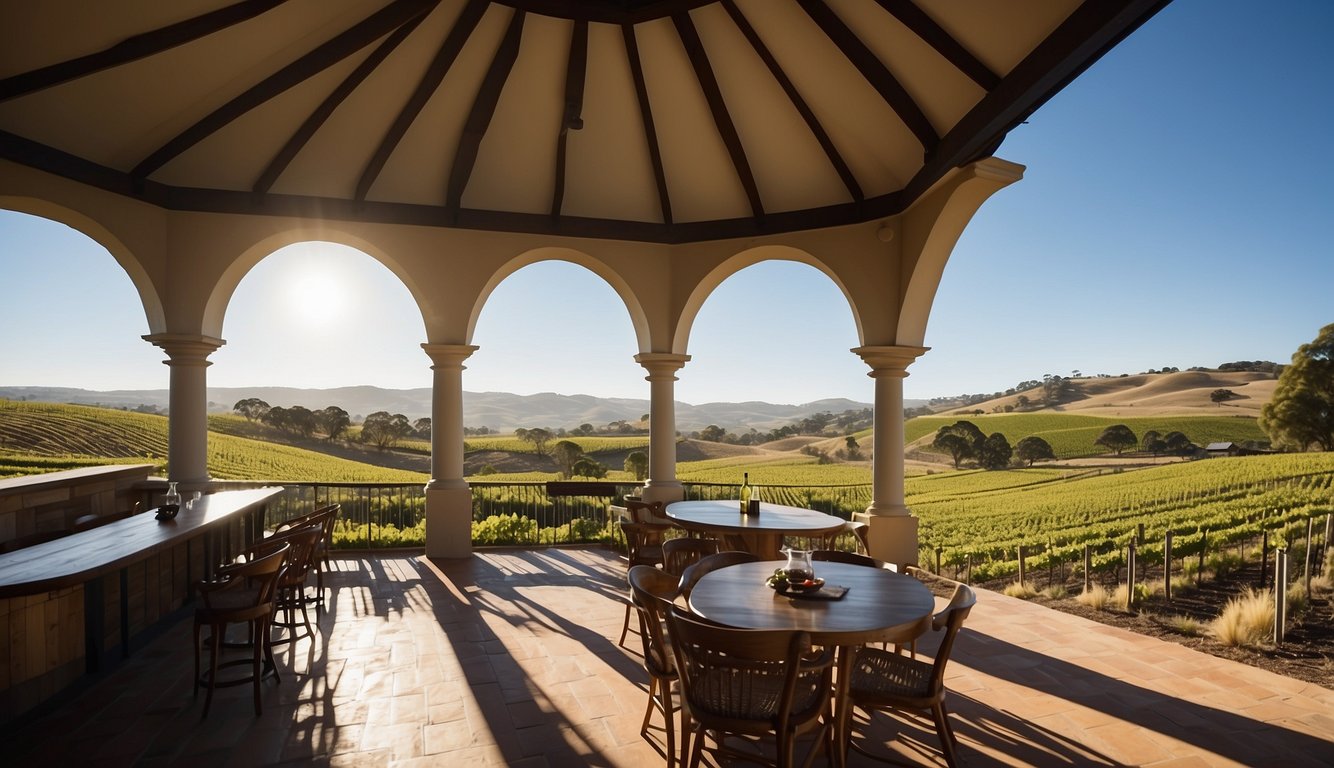
In the Barossa Valley, efforts to preserve its rich history go hand-in-hand with forward-thinking strategies for sustainable winemaking. These initiatives ensure the region’s lasting legacy and vitality.
Character Preservation Act and Future Visions
The Character Preservation Act was introduced to protect Barossa Valley’s cultural and historical identity. This act restricts overdevelopment and maintains the unique charm of the area. As a result, you can enjoy a landscape that remains true to its roots, with historic buildings and scenic vineyards.
Future plans for the Barossa prioritize balancing modernization with tradition. Local authorities and winemakers collaborate on projects that honor past practices while embracing new technologies. This approach is key to preserving the region’s soul as it continues to grow and thrive.
Sustainable Winemaking and the Next Generation
Barossa Valley is pioneering sustainable winemaking practices to protect its environment. Techniques like water-efficient irrigation and organic farming help maintain soil health and reduce environmental impact. For example, many wineries are moving towards solar energy to power their operations.
The next generation of winemakers is passionate about sustainability. They adopt eco-friendly methods and invest in research to further improve their practices. This commitment ensures that Barossa wines will remain high-quality and environmentally friendly, securing a bright future for the region.
Barossa Valley’s young winemakers understand the importance of maintaining these traditions while innovating for the future, ensuring both the preservation and progression of this iconic wine region.
Barossa Valley Today: Culture and Recognition
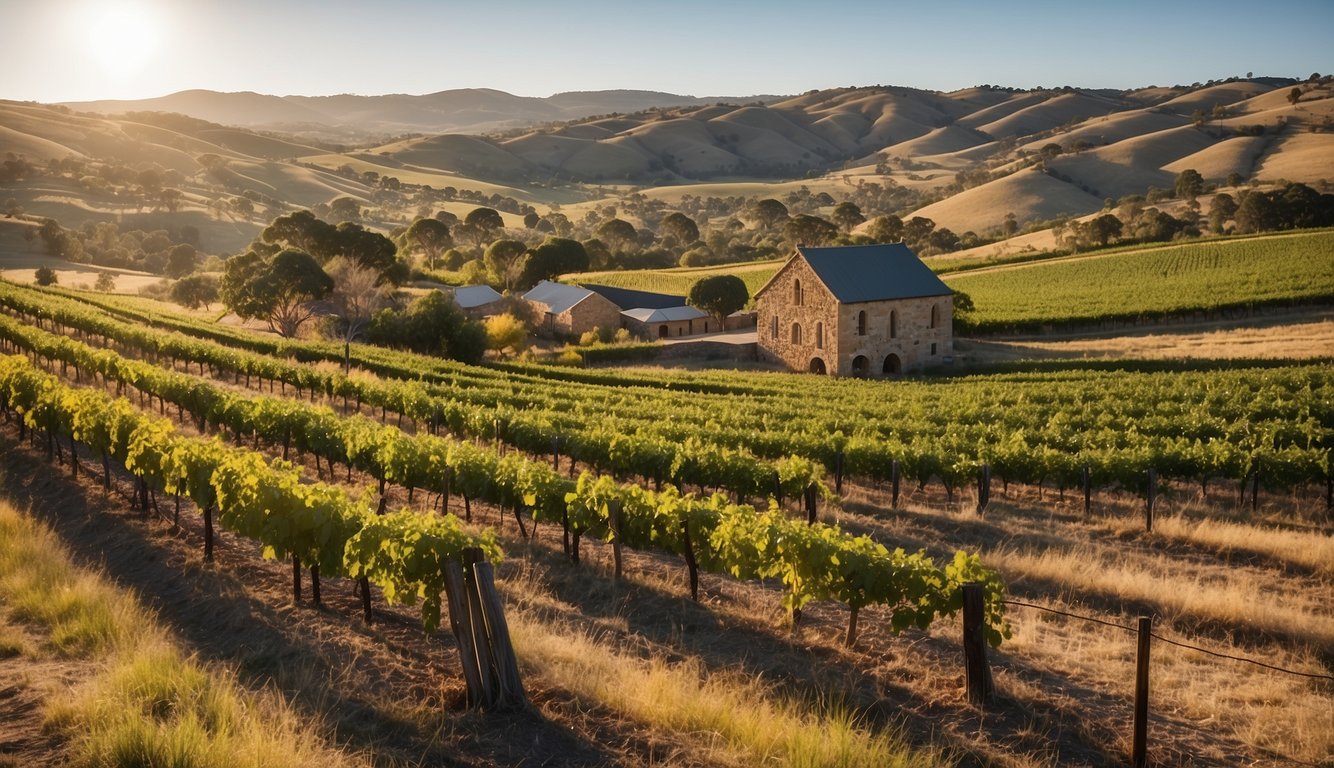
Barossa Valley is renowned for its vibrant local culture and significant contributions to the global wine industry. From the bustling Barossa Farmers Market to its international wine accolades, this region is a must-visit destination.
Wine Tourism and Local Culture
Your journey to Barossa Valley is not just about tasting wine but experiencing the local culture. The region boasts over 150 wineries, each telling its own unique story. Many of these wineries offer tours that allow you to see the winemaking process up close. You can also visit the famous Barossa Farmers Market, where you will find fresh produce and specialty foods.
Another must-visit is the farm of Maggie Beer, a local culinary icon. Known for her gourmet products, the farm offers cooking demonstrations and tastings. The local events and festivals, which often feature live music, food stalls, and arts and crafts, further enrich your experience. All these elements make Barossa Valley a vibrant and welcoming place.
Global Recognition and Contributions to Wine
Barossa Valley enjoys global recognition for its wine quality and innovation. The region is famous for its Shiraz and Riesling wines, which often win international awards. Penfolds, Jacob’s Creek, and Wolf Blass are just a few of the renowned wineries putting Barossa on the world map.
The impact of Barossa’s wine industry extends beyond South Australia. Wines from this region are exported worldwide, contributing significantly to the reputation of Australian wine. The valley’s commitment to quality and sustainable practices further elevates its status. This blend of tradition and innovation ensures Barossa Valley remains a key player in the global wine scene.
